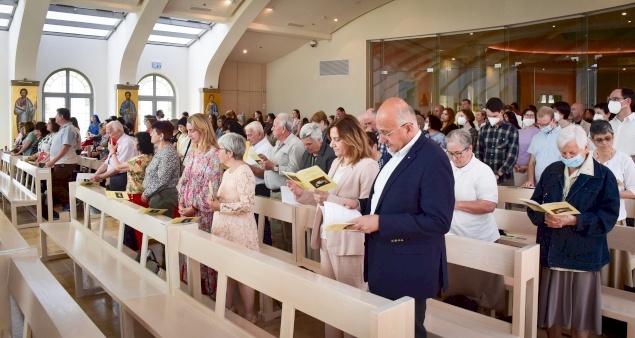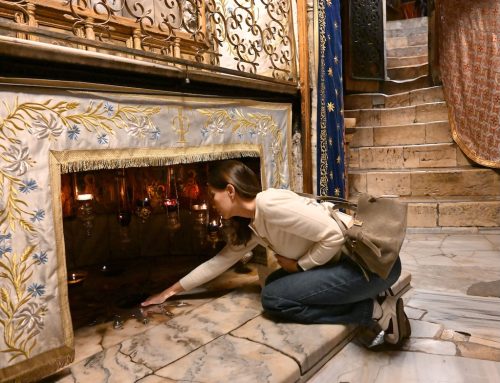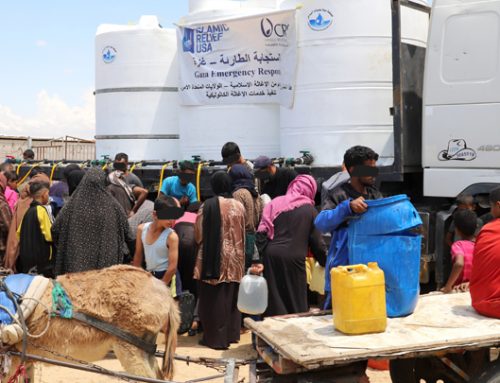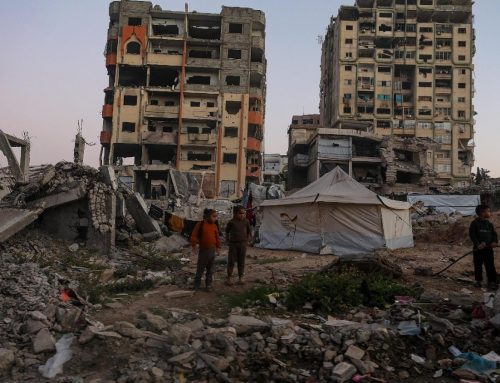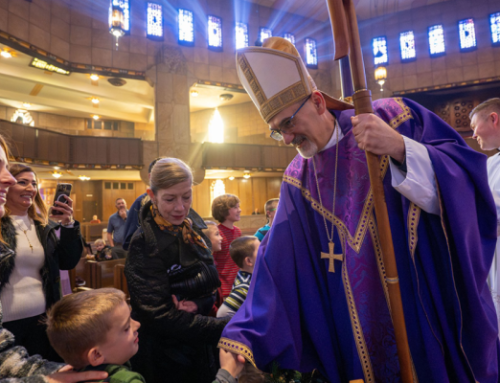MAGDALA – Mentioned by name twelve times in the Bible, a key figure in the Holy Scriptures, St. Mary Magdalene is usually celebrated on July 22, her national holiday. However, because she was the first to see Christ resurrected, here in the Holy Land, she is also celebrated on the first Saturday after Easter, at the site of Magdala in Galilee.
“Woman, why are you weeping? Whom do you seek?” Christ asks her after she has gone to her tomb (John 20:11-18). St. Mary Magdalene is not only the woman who followed Jesus during His Passion; she is also the first witness of His Resurrection, the first to have seen and believed in Him while the Apostles, out of fear, were hiding in Jerusalem. Her role, which is crucial, was even emphasized by Pope John Paul II in his letter Mulieris dignitatem.
Thus, every year, the local Latin Church of the Diocese of Jerusalem celebrates her in Magdala, a holy place located on the shores of the Sea of Galilee. This year, on Saturday, April 23rd, His Beatitude Mgr Pierbattista Pizzaballa, Latin Patriarch of Jerusalem, accompanied by Mgr Boulos Marcuzzo, Bishop Emeritus and Titular of Emmaus, celebrated a Mass in her honor in the church of Duc in Altum (a name referring to John Paul II’s letter Novo Millennio Ineunte), after a two-year hiatus due to the COVID-19 pandemic.
“Three years ago, in 2019, we celebrated this feast not only alongside our faithful, but also with Greek Catholics and Maronites,” Mgr Marcuzzo recalled. “Now that the pandemic is coming to an end, I hope that this tradition will resume in earnest.”
A recent site with a 1st-century synagogue and several other archaeological remains, Magdala, which once stood on the Via Maris (an early Bronze Age trade route that connected Egypt to Mesopotamia), was revived in 2009 at the initiative of Father Juan María Solana. It was during the subsequent work that the famous synagogue, where Jesus might have taught, was discovered, as well as the famous “Stone of Magdala” (the original of which is kept in Ginosar).
Today, with the help of many volunteers, Magdala continues to develop: by welcoming local and foreign pilgrims, organizing online pilgrimages, promoting the role of women, planning archaeological excavations… The objective? To continue to enhance the rich historical, spiritual and cultural heritage of the birthplace of Mary Magdalene.
By: Cécile Leca/ lpj.org

